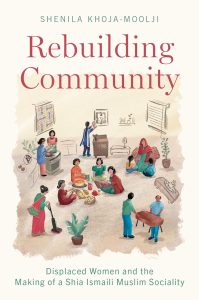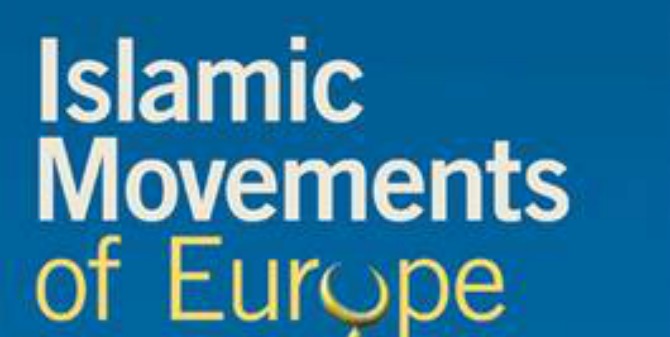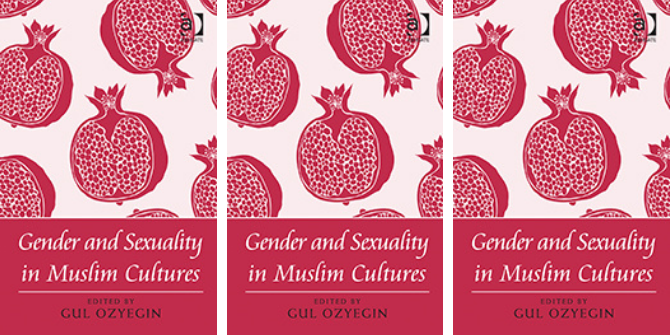In Rebuilding Community: Displaced Women and the Making of a Shia Ismaili Muslim Sociality, Shenila Khoja-Moolji recounts how Ismaili women, displaced from East Pakistan and East Africa in the 1970s, recreated religious community in North America. Taking an ethnographic approach to the study of diasporic community building among women, this book is a worthy intervention into the fields of religious and Islamic studies, writes Merin Shobhana Xavier.
Rebuilding Community: Displaced Women and the Making of a Shia Ismaili Muslim Sociality. Shenila Khoja-Moolj. Oxford University Press. 2023.
 Shenila Khoja-Moolji’s Rebuilding Community: Displaced Women and the Making of a Shia Ismaili Muslim Sociality archives intricate stories of Ismaili women who (re)built their lives and communities (jamat) through displacement, often after forced migration, throughout the twentieth century. Ismailis are a Shi‘a Muslim community. Within the Shi‘a community, Nizari Ismailis follow who they believe to be the living descendent of Ali, the cousin and son-in-law of Prophet Muhammad, Aga Khan IV.
Shenila Khoja-Moolji’s Rebuilding Community: Displaced Women and the Making of a Shia Ismaili Muslim Sociality archives intricate stories of Ismaili women who (re)built their lives and communities (jamat) through displacement, often after forced migration, throughout the twentieth century. Ismailis are a Shi‘a Muslim community. Within the Shi‘a community, Nizari Ismailis follow who they believe to be the living descendent of Ali, the cousin and son-in-law of Prophet Muhammad, Aga Khan IV.
As a minority community with distinct practices, they have been religiously persecuted for their beliefs, such as in India and Pakistan, but they have also been ethnically persecuted, as seen during the expulsion of Asians by the former President Idi Amin in Uganda in 1972.
Khoja-Moolji draws from remarkable ethnographic work, such as oral histories along with personal and community archives to capture how Ismaili women cultivated ethics of care that informed Ismaili communities’ emplacement.
In her book, Khoja-Moolji draws from remarkable ethnographic work, such as oral histories along with personal and community archives to capture how Ismaili women cultivated ethics of care that informed Ismaili communities’ emplacement. Women’s experiences of displacement, violence and protection grounded communities’ post-displacement lives as they lean into their faith (iman), either through their relationship with the Imam (spiritual leader, the Aga Khan) or by establishing religious community, such as through ritual and volunteer (seva) work.
Decisions to migrate and the kind of life cultivated after migration, were informed by directives given by the Aga Khan of the time, such as via his farmans (instructive speeches) or other religious discourses, like the Qur’an or ginans (sacred music).
Decisions to migrate and the kind of life cultivated after migration, were informed by directives given by the Aga Khan of the time, such as via his farmans (instructive speeches) or other religious discourses, like the Qur’an or ginans (sacred music). In this way, the book is ultimately about memories and “postmemories” across generations and geographies. Be it through sacred spaces, like the development of new jamatkanas (prayer halls) or through food, such as cooking bhel puri among Ismaili women, memories sustain, invigorate, interrupt, and mend Ismaili communities, like many diasporic communities. But in this instance, memory hinges on a specific transnational religious identity which informs acts of piety. This religious milieu unifies Ismailis as they navigate new lives in hosts lands and reconfigure their religious practices intentionally.
The book provides a fascinating intergenerational perspective on “practices of care” and challenges some of our limited perceptions of reproductive labour
Chapter One situates the conceptual framework of the book and notes the lack of academic attention given to Ismaili women, especially the importance of their “placemaking activities within the framework of spiritual acts” (7). As such, the study explores the connections of gender, religion, and placemaking via the case study of Ismaili women due to their displacement from India and Pakistan to East Africa, East and West Pakistan and eventually to the United States and Canada. The book provides a fascinating intergenerational perspective on “practices of care” and challenges some of our limited perceptions of reproductive labour (domestic and gendered) as an arena which has meaning for Ismaili women.
Using her interlocutors’ memories of the lives of their grandmothers and mothers, Khoja-Moolji captures the everyday realities of Ismaili women, from care work at home to helping beyond the home in social and religious contexts
Chapter Two focuses on the period from the 1890s to the 1970s, when Ismaili women were navigating life in East Africa and East Pakistan. Using her interlocutors’ memories of the lives of their grandmothers and mothers, Khoja-Moolji captures the everyday realities of Ismaili women, from care work at home to helping beyond the home in social and religious contexts (running businesses or at jamatkhanas). During this period important institutional shifts are apparent, especially as the Aga Khan encouraged women to adapt to English cultural norms, such as through attire, and pushed for the education of girls across the jamat.
The women in this second generation consider their responsibilities as settlers in Canada and the United States, and their ethical obligation to participate in broader Muslim and non-Muslim social justice-related concerns
Chapter Three focuses on her interlocutors’ relationship with the Aga Khan, particularly the ways the murids (students) considered his active role in helping them during tumultuous times, while Chapter 5 delightfully engages with memory and senses via food in (re)making home, mainly through an analysis of Ismaili cookbooks. It is in such chapters that we are privy to the intimate nature of Khoja-Moolji’s own relationship to the project and how it informed her methodology, as she shares memories of cooking with her nani (grandmother), and how this memory impacted her grief when her nani passed and Khoja-Moolji was unable to attend her funeral due to Covid travel restrictions. In this way, these memories continue to grow and transform across generations. This personal story also sets up the final substantive chapter which considers the experiences of second and subsequent generations of Ismaili women’s relationship to the broader Ismaili community. The women in this second generation consider their responsibilities as settlers in Canada and the United States, and their ethical obligation to participate in broader Muslim and non-Muslim social justice-related concerns, such as protesting anti-Black racism or Islamophobia. Here, the present generation draws upon post-memories (or stories of their ancestors who suffered displacement) to consider not only their complicity and privilege as an established diasporic community but also their responsibility moving forward.
Rebuilding Community archives vital stories and lives of Ismaili women from South Asia, East Africa, and North America, and shows how their everyday existence has defined Ismaili community and institutional development in the diaspora.
In sum, Rebuilding Community archives vital stories and lives of Ismaili women from South Asia, East Africa, and North America, and shows how their everyday existence has defined Ismaili community and institutional development in the diaspora. Crucially, Ismaili women laboured because of their ethic of care and care work, which they often framed through seva. The stories told here, from the violence of displacement (abuse, dislocation, and isolation) to Ismaili women’s resilience and care work for one another makes this book an extraordinary archive (or an “artefact of care”) for the Ismailis globally and speaks to the enormous service that Khoja-Moolji has done her community. The sharp theorisation of sacred spaces (jamatkhanas), the consideration of how care work informs religiosity, the focus on Muslim women’s stories and the ethnographic methodology combine to render this book a worthy intervention into the fields of religious and Islamic studies.
Note: This review gives the views of the author, and not the position of the LSE Review of Books blog, or of the London School of Economics and Political Science. The LSE RB blog may receive a small commission if you choose to make a purchase through the above Amazon affiliate link. This is entirely independent of the coverage of the book on LSE Review of Books.
Image Credit: Reimar on Shutterstock.






